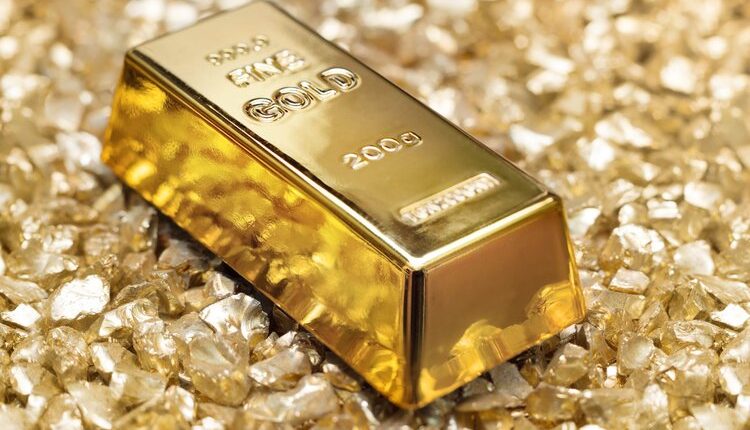- Gold prices climb following US Q1 GDP results falling below expectations.
- Sharp increase in Q1 inflation to 3.7% tempers expectations for immediate Fed rate cuts and underpins higher Treasury yields.
- Fed officials maintain cautious stance on monetary policy, echoing concerns over persistent inflation pressure.
Gold prices advanced modestly during Thursday’s North American session, gaining more than 0.5% following the release of crucial economic data from the United States (US). GDP figures for the first quarter of 2024 missed estimates, increasing speculation that the US Federal Reserve (Fed) could lower borrowing costs. However, inflation for the same period jumped sharply, which would delay interest rate cuts by the Fed.
XAU/USD trades at $2,330 after bouncing off daily lows of $2,305 amid higher US Treasury yields, courtesy of the reacceleration of inflation. As expected by analysts, the US economy would slow down in 2024, but it missed the mark by a full percentage point in the first quarter. That would keep the “soft landing” narrative in place, but underlying inflation for Q1 2024 rose by 3.7% QoQ, above estimates and crushing the 2% registered in the last quarter of 2023.
This justified Fed officials’ change of stance last week. Chairman Jerome Powell gave the green light when he commented, “Recent data shows lack of further progress on inflation this year.”
Those words were echoed by a slew of policymakers, most significantly by the ultra-dovish Chicago Fed President, Austan Goolsbee, who said, “Fed’s current restrictive monetary policy is appropriate.”
Daily digest market movers: Gold price climbs amid highs US yields, soft USD
- Gold advance continues even though US Treasury yields advance. The US 10-year note yield is up six basis points (bps) at 4.706%, while US real yields, which closely correlate inversely with the golden metal, are also up by the same amount, at 2.296%.
- A softer Greenback also underpins the yellow metal. The US Dollar Index (DXY) is down 0.22% at 105.59.
- US GDP for Q1 2024 expanded by 1.6% QoQ, below estimates of 2.5%, and trailed Q4 2023’s 3.4%. The core Personal Consumption Expenditure Price Index (PCE) for the same period rose 3.7%, crushing estimates of a 3.4% increase and up from 2% in the previous reading.
- In addition, the US labor market remains strong. Initial Jobless Claims for the week ending April 20 missed estimates of 214K, coming at 207K, less than the previous reading.
- Upcoming Q1 GDP data and core PCE inflation figures will provide key insights into the possible timing of the Fed’s interest rate reductions. The core PCE, the Fed’s preferred measure of inflation, is expected to maintain a steady monthly growth of 0.3%. Additionally, the annual core PCE rate is anticipated to decrease to 2.6% from 2.8% in February.
- Data from the Chicago Board of Trade (CBOT) suggests that traders expect the fed funds rate to finish 2024 at 5.035%, up from 4.98% on Wednesday.
Technical analysis: Gold price hovers near $2,330 as buyers take a breather
Gold price edges up, but it’s facing resistance at $2,337, the April 24 high. A breach of the latter will expose the psychological $2,350 figure, followed by the $2,400 mark. Subsequent gains lie once that supply zone is cleared, followed by the April 19 high at $2,417, followed by the all-time high of $2,431.
On the flip side, if the XAU/USD price dips below the April 15 daily low of $2,324, that would pave the way to test $2,300. A breach of the latter would expose the April 23 low of $2,229, followed by the March 21 high at $2,222.
GDP FAQs
A country’s Gross Domestic Product (GDP) measures the rate of growth of its economy over a given period of time, usually a quarter. The most reliable figures are those that compare GDP to the previous quarter e.g Q2 of 2023 vs Q1 of 2023, or to the same period in the previous year, e.g Q2 of 2023 vs Q2 of 2022. Annualized quarterly GDP figures extrapolate the growth rate of the quarter as if it were constant for the rest of the year. These can be misleading, however, if temporary shocks impact growth in one quarter but are unlikely to last all year – such as happened in the first quarter of 2020 at the outbreak of the covid pandemic, when growth plummeted.
A higher GDP result is generally positive for a nation’s currency as it reflects a growing economy, which is more likely to produce goods and services that can be exported, as well as attracting higher foreign investment. By the same token, when GDP falls it is usually negative for the currency. When an economy grows people tend to spend more, which leads to inflation. The country’s central bank then has to put up interest rates to combat the inflation with the side effect of attracting more capital inflows from global investors, thus helping the local currency appreciate.
When an economy grows and GDP is rising, people tend to spend more which leads to inflation. The country’s central bank then has to put up interest rates to combat the inflation. Higher interest rates are negative for Gold because they increase the opportunity-cost of holding Gold versus placing the money in a cash deposit account. Therefore, a higher GDP growth rate is usually a bearish factor for Gold price.
Read the full article here

